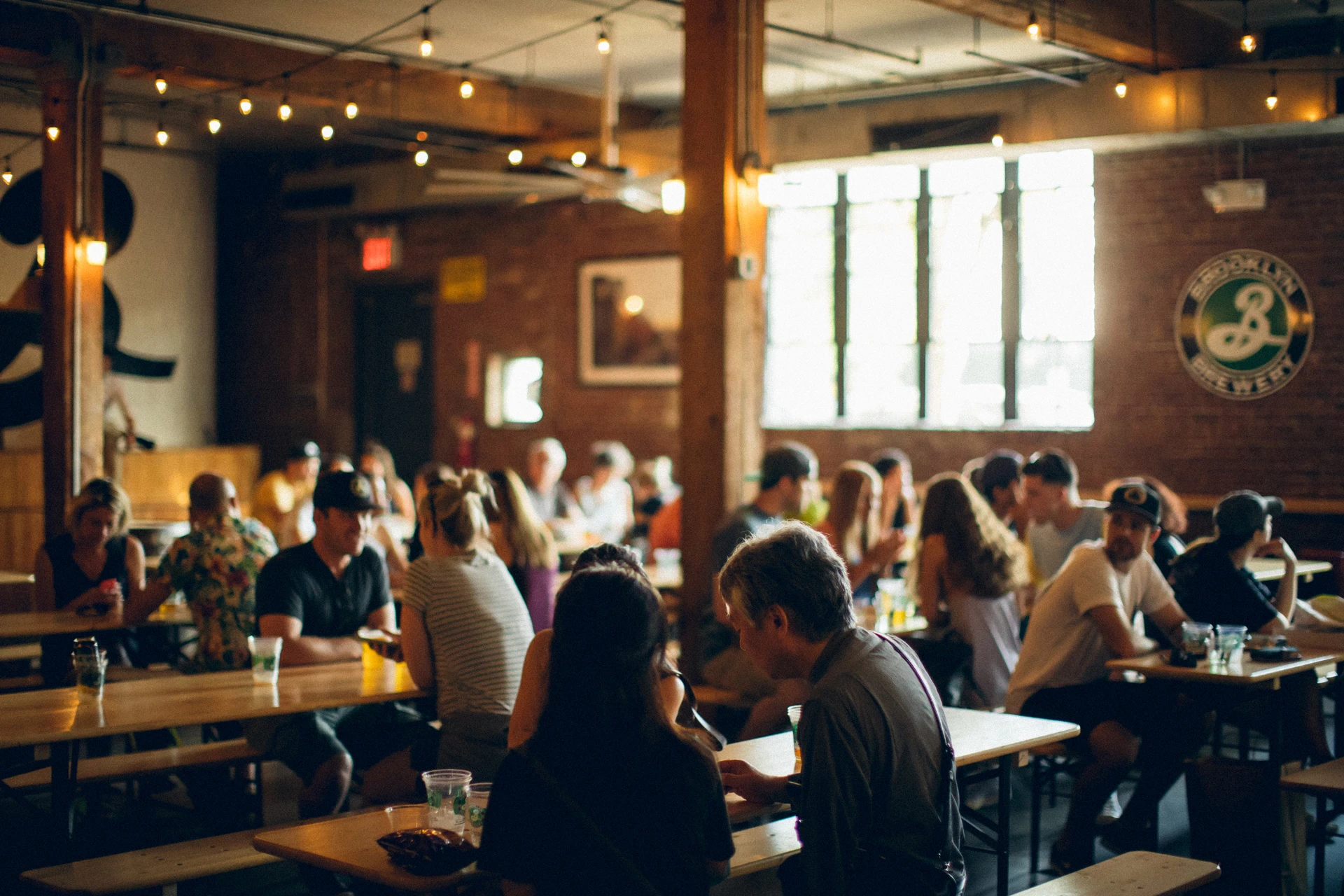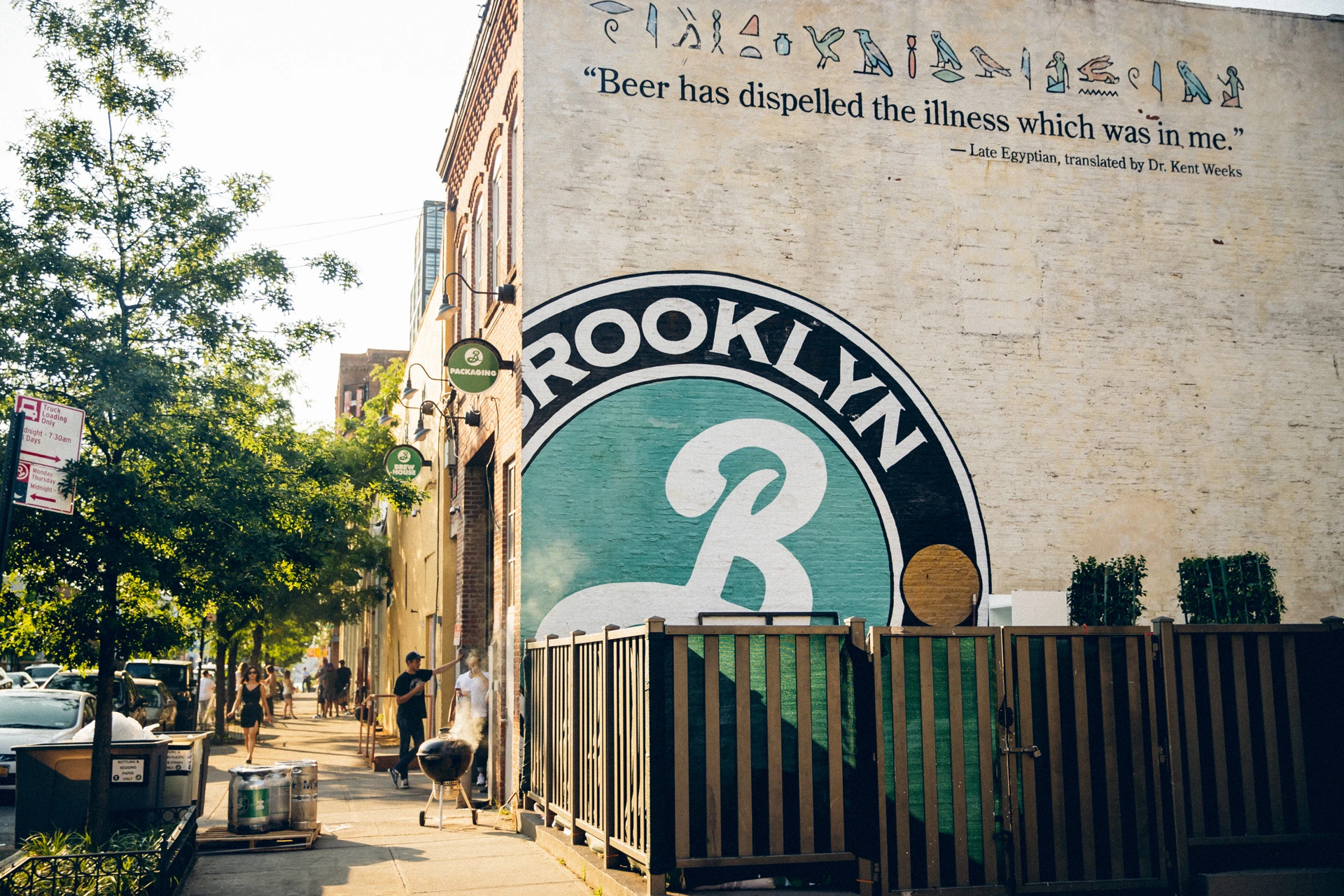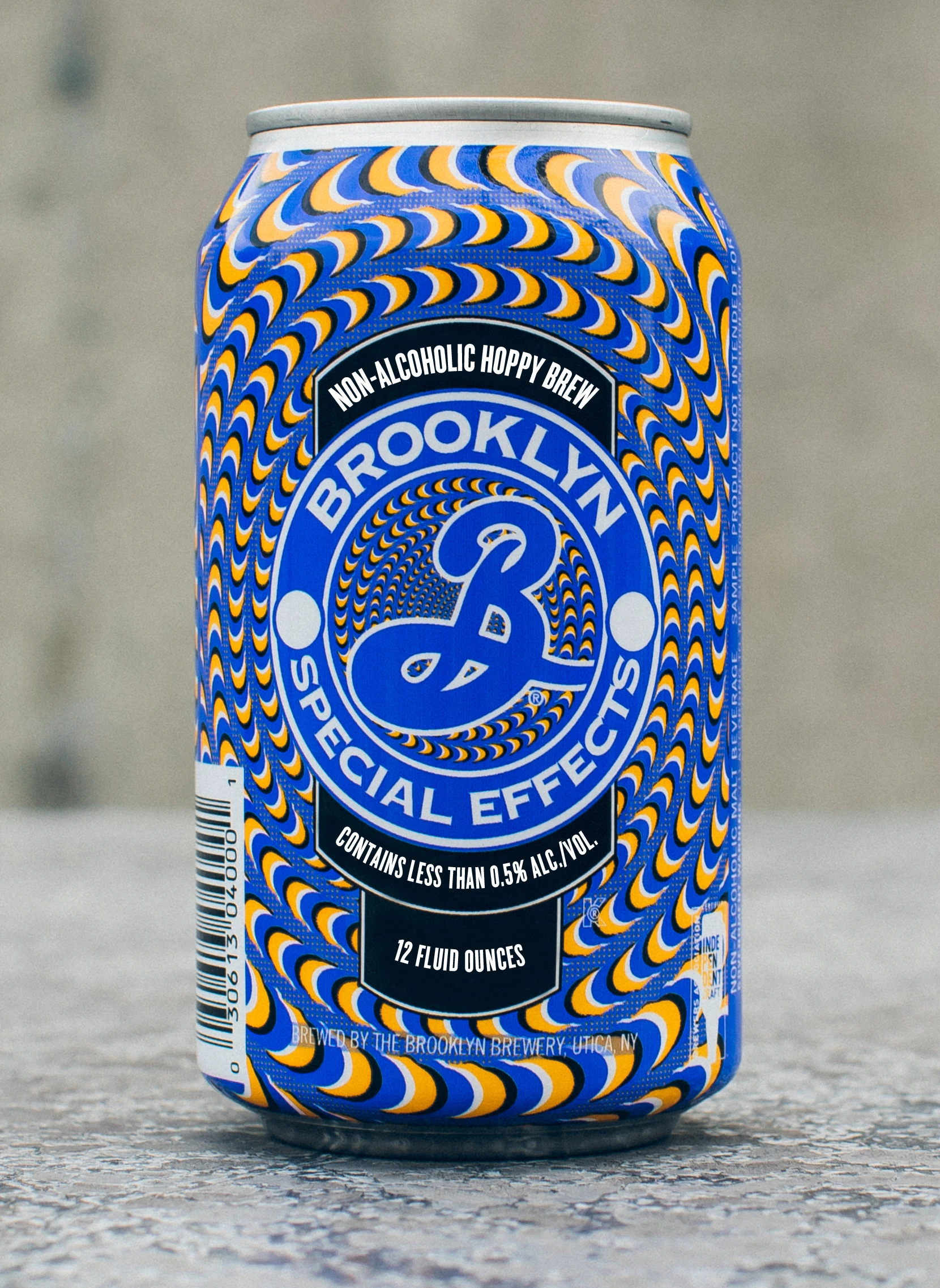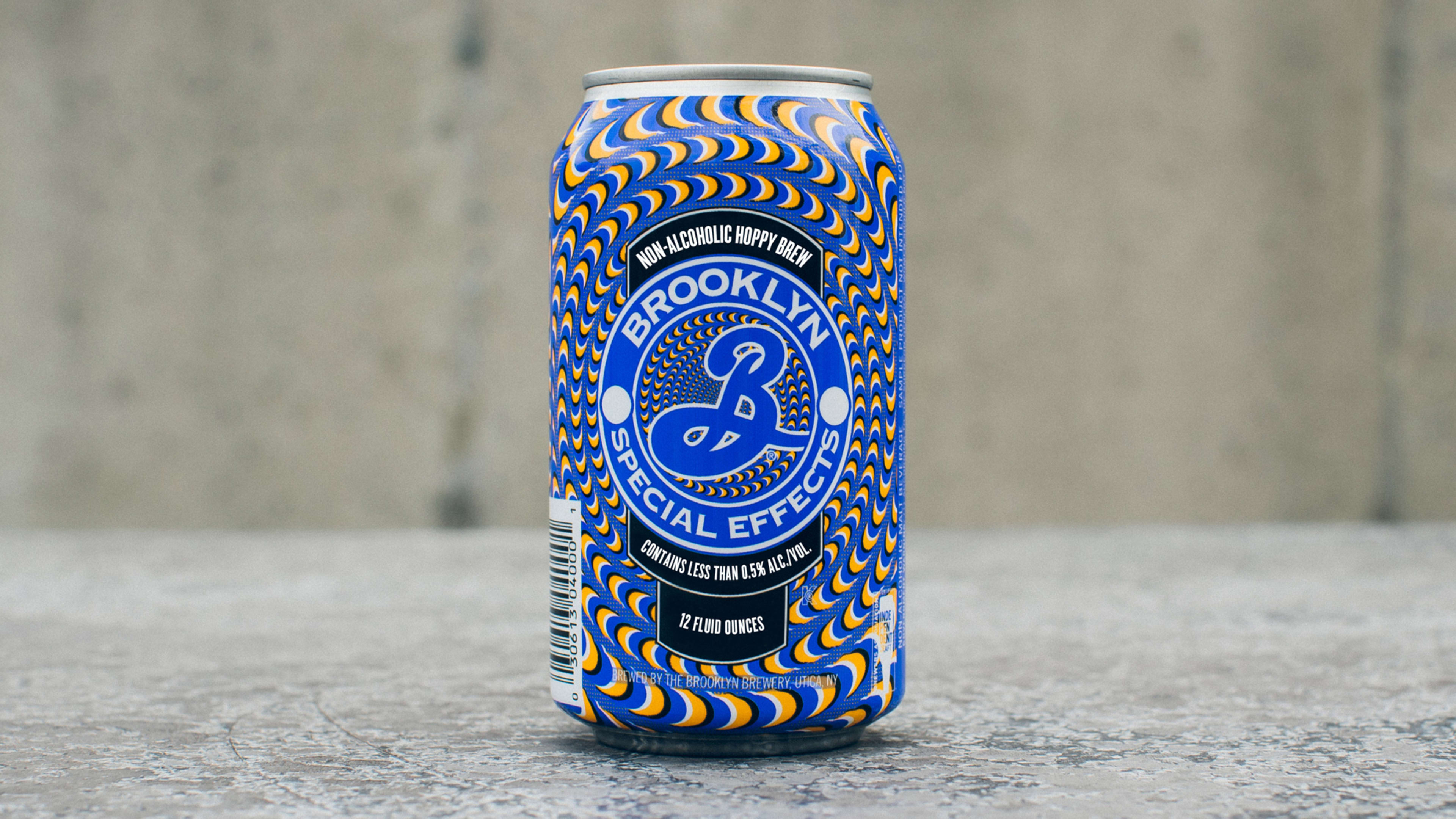At 1 p.m. on a recent Monday I found myself drinking a beer. Of all the luxuries that come with working from home, the ability to crack a beer during work hours is not one I typically take advantage of. But this was in the name of research. My hypothesis: This beer would not get me buzzed—so I figured drinking while sending emails was as good a test as any.
Not to get too pedantic, but the beer in question shouldn’t even be called “beer” to begin with. “There are regulations that say you can use language like ‘brew’ or ‘malt beverage’ [on the can],” says Robin Ottaway, president of Brooklyn Brewery, one of the oldest craft breweries in the country. “But ‘beer’ is not allowed.” Ottaway is talking about Special Effects, the company’s first nonalcoholic “lager-style brew.” After a year and a half of development, Special Effects is about to hit the store shelves in select cities in November, and it’ll be a test of just how eager people are to embrace NA beer.

Statistically speaking, people have been ready for something like Special Effects for a while. The demand for nonalcoholic beverages has been steadily growing over the last five years; meanwhile, beer sales have flattened. One report found that while NA beers claim just 5% of the current global beer market, the category is experiencing growth of 3.9% on average annually, making it the fastest growing segment of the beer market. Consumer habits back that up. Research from Brooklyn Brewery found 44% of 21- to 34-year-old beer drinkers (read: a very monetizable demographic) actively take time off from drinking alcohol. Fifty-four percent of beer drinkers are looking for ways to reduce their alcohol consumption.
The “sober curious” movement is well documented, and booze brands have started to notice. In 2017, Heineken launched Heineken 0.0, its first NA beer, and sales have been growing ever since. Last year, NA brewery Athletic Brewing was so in demand it couldn’t supply stockists, prompting it to install bigger fermentation tanks. Even the old NA standby O’Doul’s recently embarked on a temporary makeover campaign to ensure its beer speaks to a younger audience. And that’s just in the United States, where NA beer is still a nascent category. In Europe, demand for NA beer is already more established (Brooklyn Brewery soft-launched Special Effects there this past winter), and has become part of a post-workout routine for some athletes who believe it helps quell inflammation.

The point is, Brooklyn Brewery didn’t come to the idea of Special Effects without doing its research, but there was still the question of how a NA beer should be framed when coming from a brewery with a long history of making boozy beverages. Ottaway and his team had been noticing for a while that the stigma around NA beer was fading away and being replaced by something that felt almost like smugness. Suddenly not drinking, or drinking NA beverages, was like a secret life-hack for people who wanted to go out at night and still get up in the morning feeling good. “It used to be like, “Oh, sorry, I’m not drinking,” says Stephen Doyle, a graphic designer whose studio Doyle Partners worked on Special Effects packaging. “Now it’s like, ‘I’m not drinking because of all these other benefits.'”
Brooklyn Brewery enlisted Doyle and his team to create a whole new graphic architecture for its line of NA beers (Special Effects is the first, but they have plans to launch more styles of NA beers in the future). They wanted it to feel like part of the Brooklyn Brewery family—Milton Glaser’s swoopy “B” is still there—but with an edge that made it stand out. A pendant across the front of the can clearly states that the drink is nonalcoholic, which was key to the beer’s branding. “On some of the other NA beers you really have to hunt for it,” Doyle says. “We really wanted to go out swinging.”

The final pattern is eye-catching, to say the least. The swirl of blue and orange creates a trippy Magic Eye effect that Brooklyn Brewery’s director of field marketing and innovation projects, Kaitie Lynch, says is well suited to roll out across different kinds of marketing moments. After the beer launches nationally in January, Brooklyn Brewery will begin a campaign that will put Special Effects in front of the millennial consumers whom the statistics say are most likely to drink it. Colossal Media will be painting one of its signature handmade murals in Williamsburg, Brooklyn, for the launch. And later this fall, the company is partnering with the sober day rave party Daybreakers to serve the beer at its parties. The brewery will also be hosting daytime block parties in Brooklyn as well as providing beer to local 5Ks.
The all-in push is indicative of a major shift in the beer universe—one where Special Effects is competing with not just NA beers, but all craft beers. Special Effects tastes good enough that the handful of people I gave it to without telling them what it was were fully convinced it was a regular ale. But Special Effects also needs to outshine the hordes of other beers that cram store shelves and vie for people’s attention. “In a crowded marketplace you have a better chance of success if things stand out,” Ottaway says. “And this design is pretty hard to miss.”
Recognize your brand’s excellence by applying to this year’s Brands That Matter Awards before the early-rate deadline, May 3.
